Diane Street is one of two school librarians at Collingwood Area School. She gives us a brief history of Collingwood and its early schools before diving into her experiences of working in an area school library.
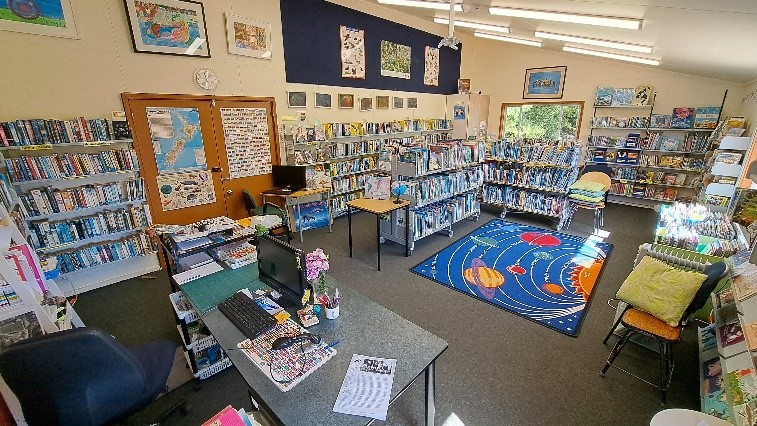
I want to preface my story about being a librarian and the role of the library in this school with a snapshot of the school and local history to set the scene about the special nature of area schools and this one in particular.
Collingwood is steeped in history and surrounded by stunning scenery. A two-hour drive over the Tākaka Hill from Nelson, many travellers use Collingwood as a jumping-off point for the Heaphy Track, Kahurangi National Park and tours along Farewell Spit. Area schools and composite schools offer primary, intermediate and secondary education in one school, from Year 1-15 (Years 14-15 reflect schools funded for students remaining after Year 13). They often have early childhood centres attached or nearby as well. Often, area schools are the hub of the town or local community. There are between 35 to 45 of these schools in New Zealand. They often form area school collectives to take part in sporting activities with each other and there is a National Area schools sports tournament held every year.
Collingwood Area School was established in 1859 as Collingwood School with Primer 1 to Standard 6 (Years 1-12 equivalent). In 1936 it expanded to include a class for secondary students and the following year it became a District High School. In 1978 it became an area school. We have a fabulous book written about the school detailing our history which was produced for the 150th celebrations in 2009.
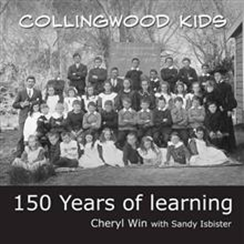
Within a few months of the 1856 gold rush, and subsequent explosion in the population, there were shops, hotels, a customhouse and a bakery already erected. Parents and town leaders were petitioning the Nelson Board of Education for a school. Western Golden Bay was rich in a wide variety of minerals, timber and development possibilities for farming. All these industries attracted many men and their families looking for work. Europeans and Māori from other areas of New Zealand and Australia flocked here in search of work and owning their own land. Small settlements dotted the valleys, plains and harbour mouths.
There have been at least 20 schools in the Collingwood district from 1859 to the present.
This meant that schools were started, moved, amalgamated and developed. There have been at least 20 schools in the Collingwood district from 1859 to the present. The last five were Kaituna/Aorere, closed in 1956; Bainham, closed in 1969; Pakawau, closed in 1981; Mangarakau, closed in 1982; and lastly Rockville in 1992. There was always healthy rivalry between these schools and sports days and pet days and wood chopping events were highlights for the community when they could come together and socialise. With dropping rolls and improvements in roading and transport vehicles it was inevitable that all the children were expected to attend the one school. Most children now live within 20km of the school, but some are up to 40km away, which makes for long bus rides.
There is a high degree of interconnectedness and community involvement in small towns and rural schools. Many generations of the same families have attended these schools and the local community and school staff wear many hats. The staff may be in the fire brigade, run the local gym, take groups fishing near their home, be the local rugby team coach, take Star and Gateway pupils for work experience on their farms or in their cafes. Many members of the same family may work in the school or volunteer their time or diggers and trucks when needed.
Our aim was to create a social, creative, safe, welcoming and warm place with good books that are what the pupils want to read.
The library here at Collingwood is open Monday to Friday, 9am to 3pm, officially. We have two librarians who job-share the role – Donna Zeller and myself. Donna has been here since 2008 and I have been here from 2009 when I shifted from Nelson to live here. I used to work as a Library assistant at Nelson College for Girls and it was a large culture shock to start in the library here to find a different attitude to the library and reading altogether. Since then, Donna and I have been working hard to create a place that is more than a place for books. Our aim was to create a social, creative, safe, welcoming and warm place with good books that are what the pupils want to read.
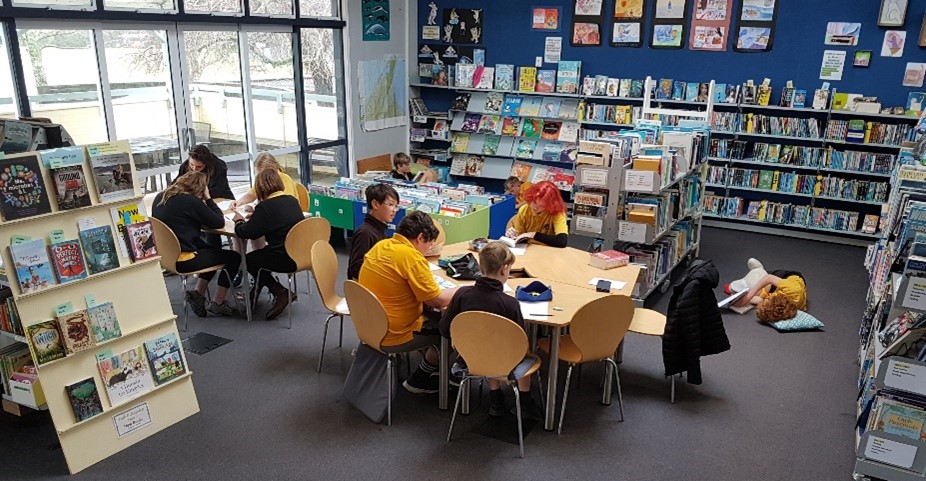
We have about 6500 books (this may seem a lot for our roll, but remember we have to cater for three levels of schooling so all ages are covered) and a roll that fluctuates but at the moment is in the 150s (in the last 14 years it has been between 118 to 182). We get a reasonable budget every year that hasn’t changed much in all the time we have been here. We take part in fundraising activities for the library and often have local businesses and groups donate money to us to buy books.
We find job sharing the role is more stimulating and productive as we can discuss and formulate ideas for how the library will operate. The school really gets two for the price of one. We each have different strengths but have a high degree of cooperation and understanding. We find it necessary to keep a daily diary where we note the important things that happen each day so the other is fully aware of what is happening and can seamlessly carry on the same jobs. We usually meet for about two hours each week to discuss what is happening and talk over upcoming activities.
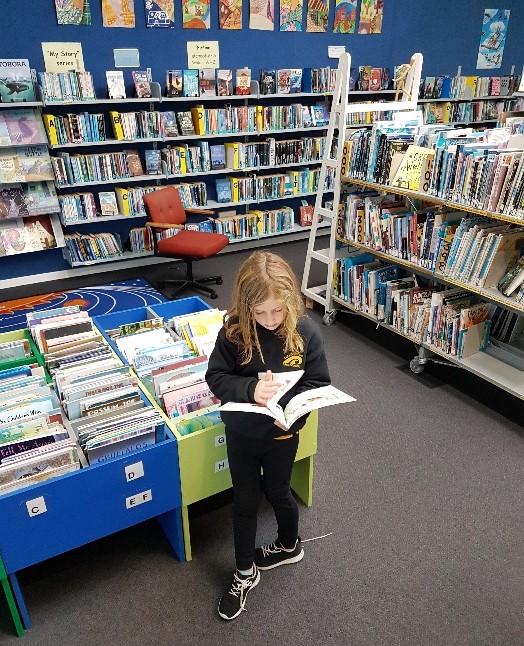
One of the benefits for students in area schools, ours at least, is that we know every pupil. We know their names, we know their family, their siblings, where they live, their parents, their interests and hobbies. We really have a relationship with them, especially if they have started school at five and leave at 18. Being in a rural area we do also get some turnover of pupils whose parents move around for work. Knowing each child so well means we know their reading habits and if a child is still trying to get the same book out after three years we can offer suggestions for their next steps and we feel that we can really influence their development.
We are very busy in our library. We have a library page in the school newsletter every couple of weeks. We have crafts, games, knitting, colouring in, mind puzzles, cards and a range of competitions and displays depending on world and national events. We want our library to be a place where the curious mind can always find some stimulation – and peace if needed.

Last year the school held a book character day, which was a lot of fun. The local public library holds a book quiz every year for Year 5 and 6 students and we enter two teams. We have author visits, and visits from Tākaka Library to encourage the pupils to join the public library, giving them a gateway to e-books, audio books and digital resources that we can’t offer here. We have participated in the Hell Pizza reading challenge and other forms of book bingo as well.
When a child’s eyes and face light up as they talk about a book, it just makes me so pleased.
One activity which has proven to be very popular which doesn’t take a lot of effort to run after the initial set up is “The Golden Ticket”: we have a selection of books with a printed golden ticket well tucked into the back of the book. If the child reads the book and returns the ticket, they get a small prize from our prize box. Sshh, don’t tell anyone else.
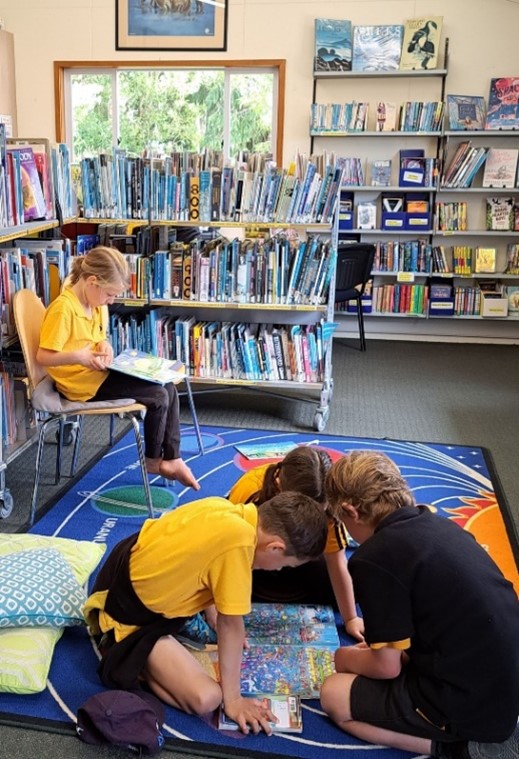
My favourite part of the job is talking and reading to the pupils. I enjoy reading the picture books to the youngest pupils and even bring in books from my personal collection to read. My three-year-old grandson has just discovered my collection of Little Critter books by Mercer Mayer and can’t get enough of them. When a child’s eyes and face light up as they talk about a book, it just makes me so pleased. We have a collaboration with our art department and the students often create art with book themes – we often have the walls lined with the students’ work. They can see themselves represented and valued.

I’m also a big fan of local and New Zealand history and genealogy, as you might have deduced, and I am a big advocate for the school’s history and local history. We are lucky to have many resources in the way of books and especially photographs of the Nelson-Tasman area that are available, and the library tries to collect as many as possible.
Librarians are very resourceful and positive people.
Our school is in the process of being mostly completely rebuilt and this has led us to be temporarily rehoused in a classroom beside our Hall/Gym from our previous centrally located large airy rooms. We are having to work really hard to try and provide a service to the students that will keep them being readers while our library is not what it usually should be. It is hard but we are looking ahead to the, hopefully, new streamlined buildings and central location again. Librarians are very resourceful and positive people.
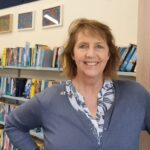
Diane Street
Diane has been a librarian at Collingwood Area School since 2009, and was previously a library assistant at Nelson College for Girls. She has a keen interest in local history of the area and the school.



